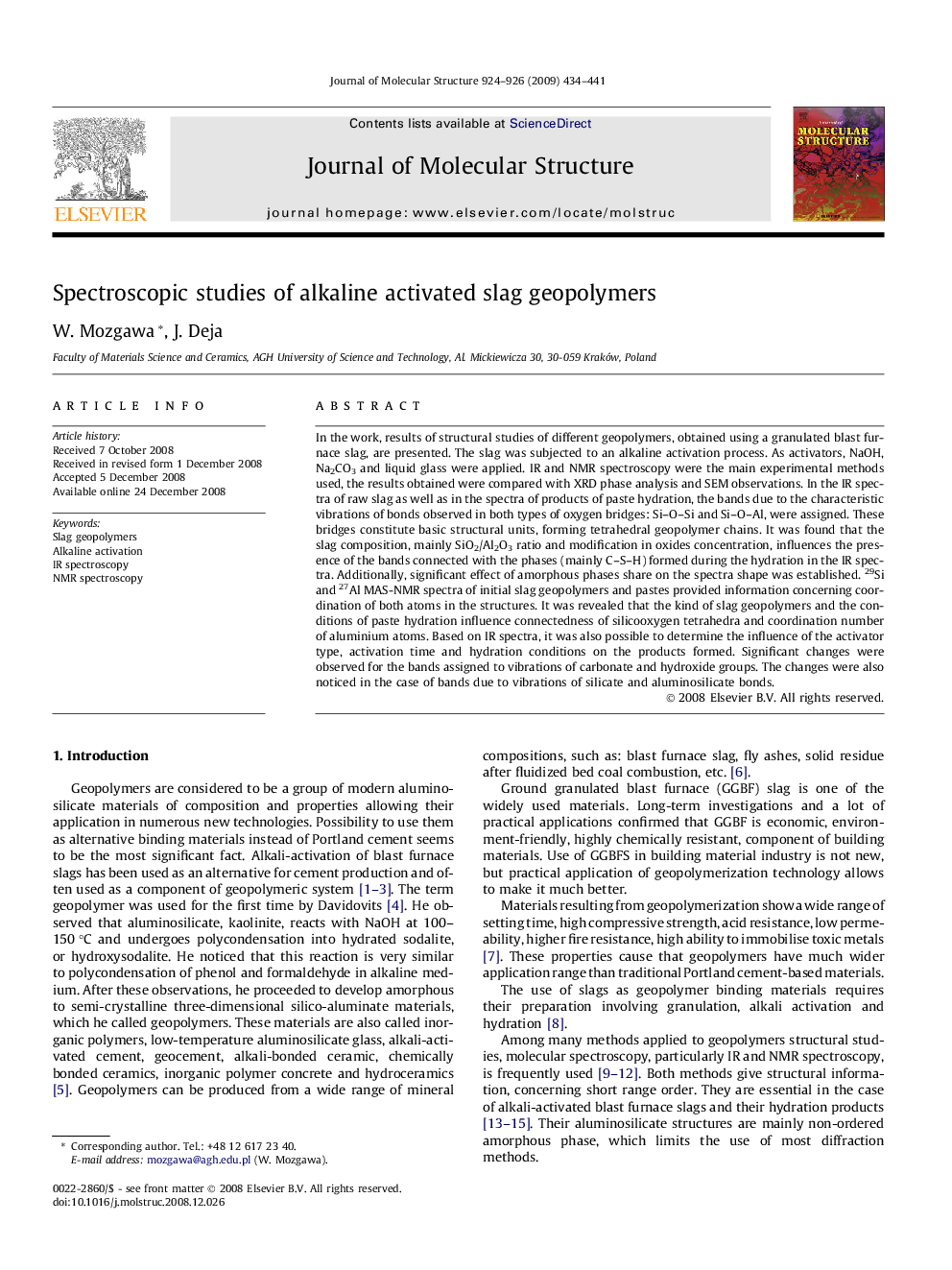| Article ID | Journal | Published Year | Pages | File Type |
|---|---|---|---|---|
| 1406679 | Journal of Molecular Structure | 2009 | 8 Pages |
In the work, results of structural studies of different geopolymers, obtained using a granulated blast furnace slag, are presented. The slag was subjected to an alkaline activation process. As activators, NaOH, Na2CO3 and liquid glass were applied. IR and NMR spectroscopy were the main experimental methods used, the results obtained were compared with XRD phase analysis and SEM observations. In the IR spectra of raw slag as well as in the spectra of products of paste hydration, the bands due to the characteristic vibrations of bonds observed in both types of oxygen bridges: Si–O–Si and Si–O–Al, were assigned. These bridges constitute basic structural units, forming tetrahedral geopolymer chains. It was found that the slag composition, mainly SiO2/Al2O3 ratio and modification in oxides concentration, influences the presence of the bands connected with the phases (mainly C–S–H) formed during the hydration in the IR spectra. Additionally, significant effect of amorphous phases share on the spectra shape was established. 29Si and 27Al MAS-NMR spectra of initial slag geopolymers and pastes provided information concerning coordination of both atoms in the structures. It was revealed that the kind of slag geopolymers and the conditions of paste hydration influence connectedness of silicooxygen tetrahedra and coordination number of aluminium atoms. Based on IR spectra, it was also possible to determine the influence of the activator type, activation time and hydration conditions on the products formed. Significant changes were observed for the bands assigned to vibrations of carbonate and hydroxide groups. The changes were also noticed in the case of bands due to vibrations of silicate and aluminosilicate bonds.
